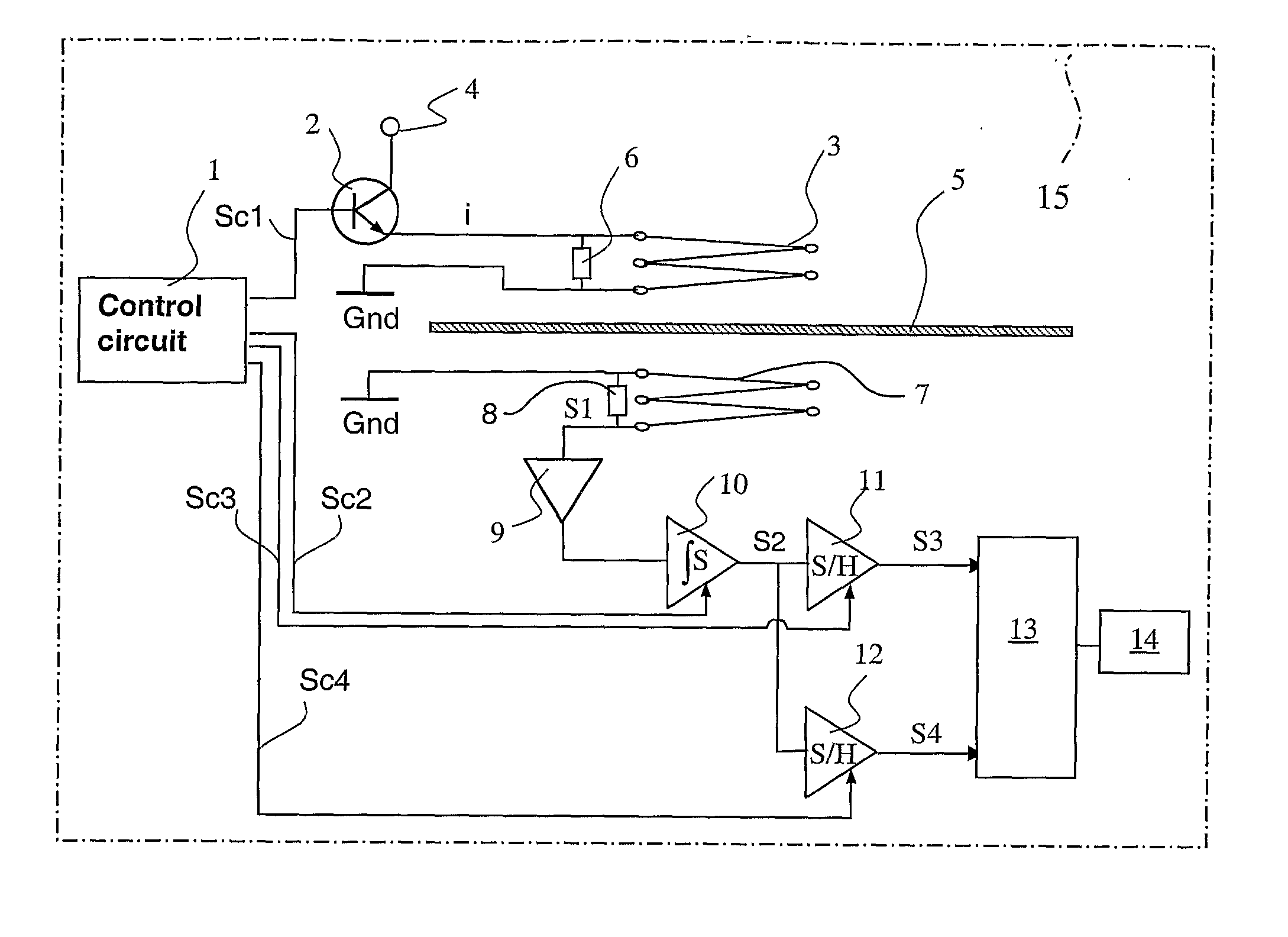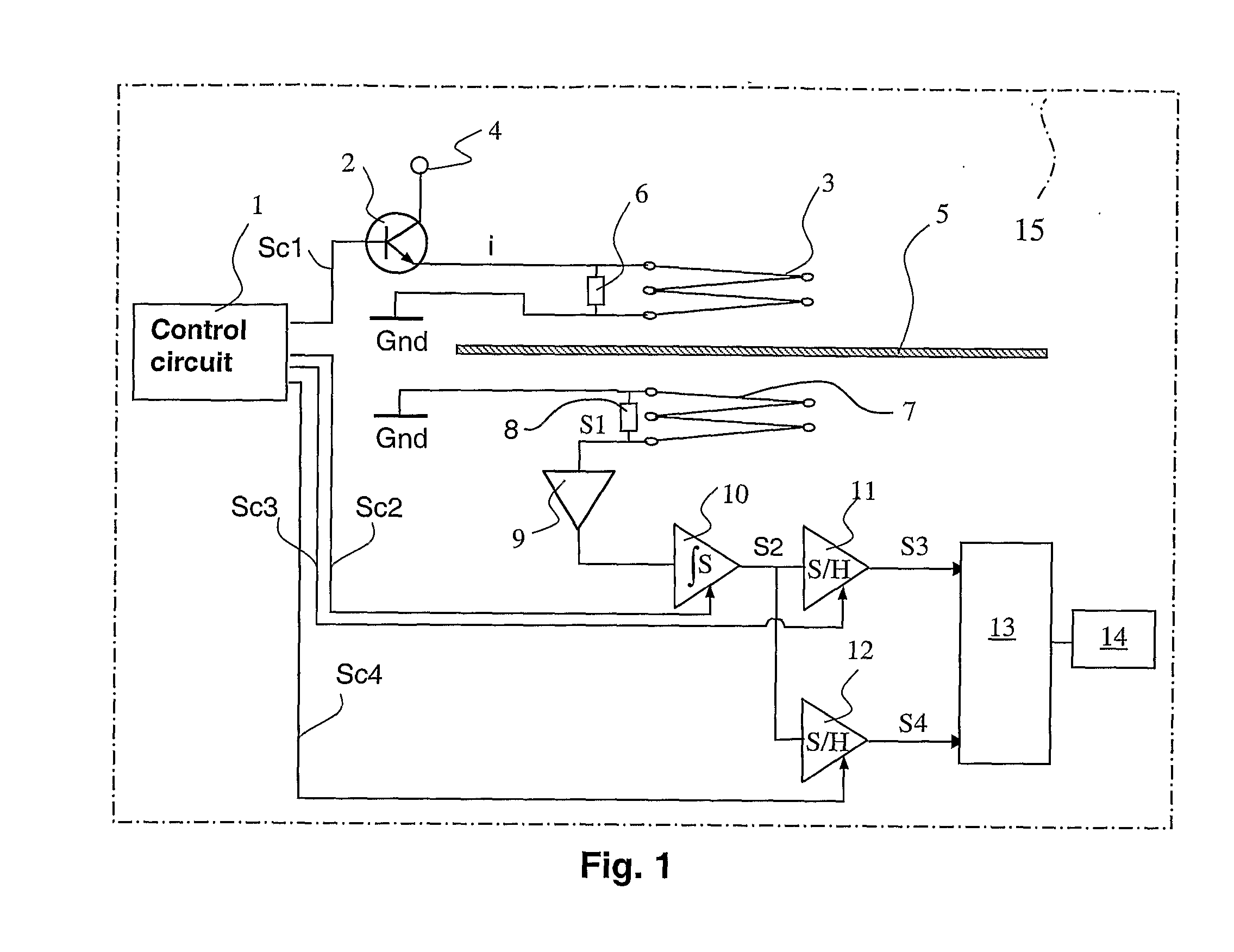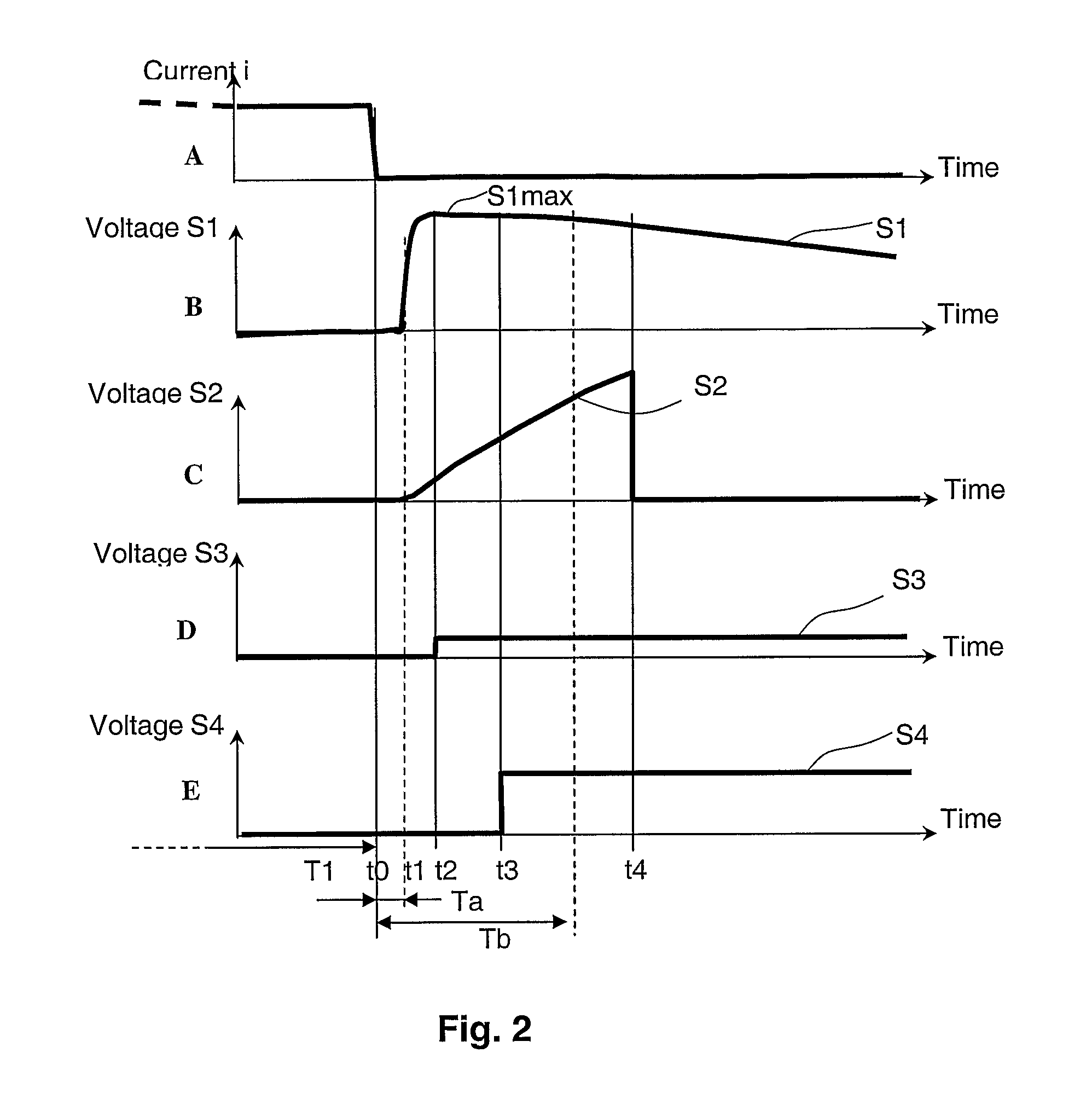Method And Device For Measuring The Thickness And The Electrical Conductivity Of An Object Of Measurement
- Summary
- Abstract
- Description
- Claims
- Application Information
AI Technical Summary
Benefits of technology
Problems solved by technology
Method used
Image
Examples
Embodiment Construction
[0050]FIG. 1 shows a circuit diagram according to the invention for measuring thickness and conductivity of an object, or an object 5 to be measured, and its electrical properties. The object 5 to be measured, here in the form of a sheet, is placed between a transmitter coil 3 and a receiver coil 7.
[0051] The transmitter coil 3 is fed, during a first period of time T1, with a substantially constant current i which comes from a current source 4 via a transistor 2. The transistor 2 is controlled by a signal Sc1 from a control circuit 1.
[0052] During a first period of time T1, a current-feed period, the transistor 2 carries current from the current source 4 to the transmitter coil 3 and further to ground Gnd. Directly after this current-feed period T1, the current to the transmitter coil 3 is interrupted by the transistor 2 shutting off. A resistor 6 across the transmitter coil 3 serves as a discharge resistor in connection with the interruption of the current.
[0053] This resistor 6...
PUM
 Login to View More
Login to View More Abstract
Description
Claims
Application Information
 Login to View More
Login to View More - R&D
- Intellectual Property
- Life Sciences
- Materials
- Tech Scout
- Unparalleled Data Quality
- Higher Quality Content
- 60% Fewer Hallucinations
Browse by: Latest US Patents, China's latest patents, Technical Efficacy Thesaurus, Application Domain, Technology Topic, Popular Technical Reports.
© 2025 PatSnap. All rights reserved.Legal|Privacy policy|Modern Slavery Act Transparency Statement|Sitemap|About US| Contact US: help@patsnap.com



